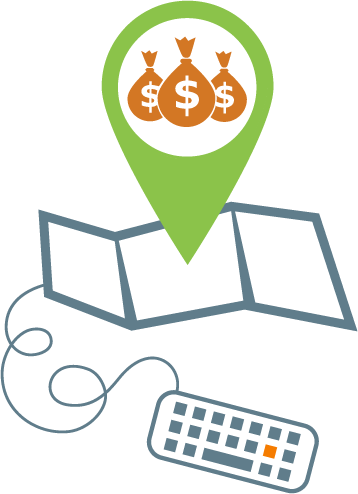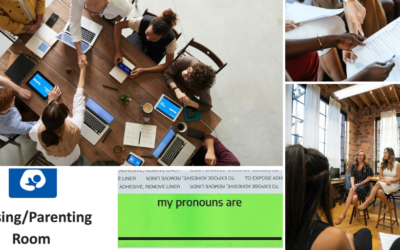![]() Plan and Promote Early: One of the most important aspects of increasing conference attendance is to start planning and promoting early. Set clear goals, establish a budget, and create a detailed timeline that outlines all the necessary tasks, and who is responsible for them. Ensure that you have a comprehensive marketing plan in place that includes targeted email campaigns, social media promotions, and collaboration with relevant professional organizations. Early and consistent promotion helps build anticipation and generates interest among potential attendees.
Plan and Promote Early: One of the most important aspects of increasing conference attendance is to start planning and promoting early. Set clear goals, establish a budget, and create a detailed timeline that outlines all the necessary tasks, and who is responsible for them. Ensure that you have a comprehensive marketing plan in place that includes targeted email campaigns, social media promotions, and collaboration with relevant professional organizations. Early and consistent promotion helps build anticipation and generates interest among potential attendees.
Develop an Engaging Program: The program of your conference plays a crucial role in attracting attendees. Create a diverse and compelling schedule that covers a wide range of topics and features renowned keynote speakers. Tailor the program to appeal to various segments of your target audience, incorporating interactive sessions, panel discussions, workshops, and networking opportunities. Encourage presenters and leaders in your field to emphasize the value participants can gain from attending the conference.
 Collaborate with Partner Institutions: Forge partnerships with other institutions, research facilities, and organizations that have a vested interest in the conference’s subject matter. By collaborating with established entities, you can tap into their network and extend your reach to potential attendees who may not be familiar with your conference. Leverage their communication channels, such as newsletters and websites, to promote your event. Mutual collaborations can also lead to shared resources, reduced costs, and increased credibility.
Collaborate with Partner Institutions: Forge partnerships with other institutions, research facilities, and organizations that have a vested interest in the conference’s subject matter. By collaborating with established entities, you can tap into their network and extend your reach to potential attendees who may not be familiar with your conference. Leverage their communication channels, such as newsletters and websites, to promote your event. Mutual collaborations can also lead to shared resources, reduced costs, and increased credibility.
![]() Utilize Social Media and Online Platforms: In the digital age, social media platforms are invaluable tools for promoting events and connecting with potential attendees. Create dedicated event pages on platforms like Facebook, LinkedIn, and X (Twitter) to build an online community and generate buzz around your conference. Encourage participants to share their excitement, engage in discussions, and use event-specific hashtags. Consider utilizing multimedia content such as videos, infographics, and testimonials to capture attention and increase visibility.
Utilize Social Media and Online Platforms: In the digital age, social media platforms are invaluable tools for promoting events and connecting with potential attendees. Create dedicated event pages on platforms like Facebook, LinkedIn, and X (Twitter) to build an online community and generate buzz around your conference. Encourage participants to share their excitement, engage in discussions, and use event-specific hashtags. Consider utilizing multimedia content such as videos, infographics, and testimonials to capture attention and increase visibility.
 Offer Early Bird Discounts and Incentives: To incentivize early registration, offer attractive discounts to participants who sign up in advance. Early bird registration discounts not only encourage prompt bookings but also help in estimating attendance numbers. Additionally, consider offering group discounts or special rates for students and early-career researchers to increase inclusivity and attract a wider range of participants.
Offer Early Bird Discounts and Incentives: To incentivize early registration, offer attractive discounts to participants who sign up in advance. Early bird registration discounts not only encourage prompt bookings but also help in estimating attendance numbers. Additionally, consider offering group discounts or special rates for students and early-career researchers to increase inclusivity and attract a wider range of participants.
![]() Engage with Previous Attendees: Capitalizing on the success and positive experiences of previous conferences can significantly impact attendance numbers. Reach out to past attendees through targeted email campaigns or newsletters, highlighting key takeaways, success stories, and upcoming conference details. Encourage them to share their experiences on social media, write testimonials, or even consider presenting at the next conference. Personal recommendations and word-of-mouth referrals are powerful tools for attracting new participants.
Engage with Previous Attendees: Capitalizing on the success and positive experiences of previous conferences can significantly impact attendance numbers. Reach out to past attendees through targeted email campaigns or newsletters, highlighting key takeaways, success stories, and upcoming conference details. Encourage them to share their experiences on social media, write testimonials, or even consider presenting at the next conference. Personal recommendations and word-of-mouth referrals are powerful tools for attracting new participants.
![]() Enhance Networking Opportunities: Networking is a vital component of any conference experience, and many attendees driving factor for attending. Facilitate networking opportunities by organizing social events, coffee breaks, or poster sessions that encourage interaction among attendees, presenters, and industry professionals. Consider implementing mobile conference apps that allow participants to connect with each other, schedule meetings, and share contact information easily. Providing dedicated networking spaces and fostering a friendly and inclusive environment can enhance the overall conference experience and encourage return attendance.
Enhance Networking Opportunities: Networking is a vital component of any conference experience, and many attendees driving factor for attending. Facilitate networking opportunities by organizing social events, coffee breaks, or poster sessions that encourage interaction among attendees, presenters, and industry professionals. Consider implementing mobile conference apps that allow participants to connect with each other, schedule meetings, and share contact information easily. Providing dedicated networking spaces and fostering a friendly and inclusive environment can enhance the overall conference experience and encourage return attendance.
Increasing attendance numbers at academic conferences requires proactive planning, effective marketing strategies, and a focus on attendee engagement. With a bit of planning, you can significantly boost attendance and create a successful conference that leaves a lasting impact on participants. A well-attended conference fosters knowledge exchange, collaboration, and growth within the academic community.
If you would like help with increasing your event attendance, please contact us.



